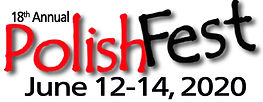- ggu2020
Are YOU too cool for Polka?
By Anntonette Zembrzuski Alberti

Although #polka music has a huge, loyal following, people who haven’t been converted often see it as old-fashioned and associate it with negative stereotypes of #EasternEuropean immigrants. If you are in that second group, I am here to tell you not only are you wrong, but you are missing out!
Polka started out as an international dance craze – sort of a 19th Century “Macarena.” It came out of the the ballrooms of Prague in the 1830’s. The name of the dance (pulka) is Czech for "half-step," referring to the rapid shift from one foot to the other. By the 1840’s when the Polka was first danced at the Odeon Theatre in Paris, Parisian dancing teachers seized on the new dance and refined it for their salons and ballrooms. #Polkamania resulted! And, of all the dances originating in the nineteenth-century, the **only** one that has survived is the polka![1]

Soooooo. . . if polka isn’t even from #Poland and it was danced by the ballet girls of Paris, how come it is so popular with #Polish immigrants to the US? After WWII, polka was re-popularized by post-war dance bands and hot band leaders like Lawrence Welk, who had his own TV show. Polish immigrants to the United States adopted the polka as their "national" dance.
Why would Polish immigrants need a “national” dance? Each wave of immigrants coming to the US faces discrimination, and the Poles were no different. Polka music was a cultural anchor that allowed immigrants to feel at home together in an unfamiliar and sometimes unwelcoming environment. But like everything in the US, many other cultural influences provide a catalyst for radical new ways to play and dance the polka, depending upon where in America the music is being played.
Polka music has become part of the Great American #MixTape.

(1) "Polish-style polka" has its roots in Chicago, a city with large Czech and Polish communities. There are two varieties:
"The Chicago Honky" (using clarinet and one trumpet). It is performed in a dixieland style, and sung primarily in the Polish language.
"Chicago Push" featuring the accordion, Chemnitzer & Star concertinas, upright bass or bass guitar, drums, and (almost always) two trumpets. This style is connected to the '50s rock-and-roll.
(2) Eastern-style polka is similar to Chicago Push style but is played at a faster tempo, usually includes a bigger section of horns and reeds, and is more connected to big-band era music than rock-and-roll.
(3) North American "Slovenian-style polka" is fast and features piano accordion, chromatic accordion, and/or diatonic button box accordion; it is associated with Cleveland.
(4)North American "Dutchmen-style" features an oom-pah sound often with a tuba & banjo, and has roots in the American Midwest.

(5)"Conjunto-style" polkas have roots in northern Mexico and Texas, and are also called "Norteño." Traditional dances from this region reflect the influence of polka-dancing European immigrants.
(6) In the 1980s and 1990s, several American bands began to combine polka with various rock styles (sometimes referred to as "punk polka"), "alternative polka", or "San Francisco-style."[2]
[1] http://www.centralhome.com/ballroomcountry/polka.htm
[2] https://en.wikipedia.org/wiki/Polka_in_the_United_States
Don't miss our #PolishFest 2018 Polka line up! We have the Rymanowski Brothers Orchestra (Friday, June 1, 2018 5 PM to 9 PM), Fritz's Polka Band (Saturday, June 2, 2018 Noon to 4 PM), Tony's Polka Band (Saturday, June 2, 20185 PM to 9 PM), and The Polka Brothers (Sunday, June 3, from 2 PM to 6 PM)!





